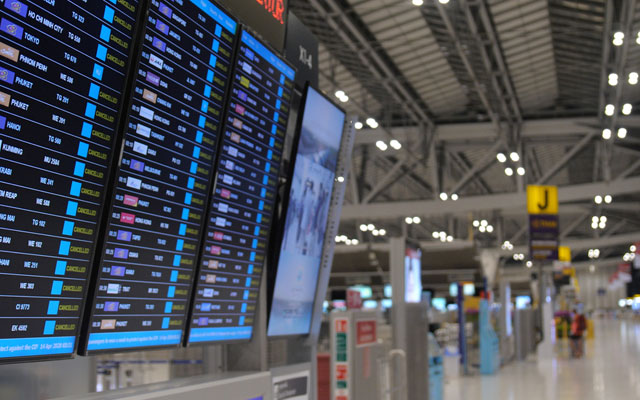The Covid-19 pandemic has caused a 22 per cent fall in international tourist arrivals in 1Q2020, and could result in an annual decline of between 60 per cent and 80 per cent year-on-year, according to the latest data from the UNWTO.
The UN body said that the dip in arrival numbers places millions of livelihoods at risk and threatens to roll back progress made in advancing the Sustainable Development Goals.

UNWTO secretary-general Zurab Pololikashvili said: “The world is facing an unprecedented health and economic crisis. Tourism has been hit hard, with millions of jobs at risk in one of the most labour-intensive sectors of the economy.”
Available data reported by destinations point to a 22 per cent decline in arrivals in the first three months of the year, according to the latest UNWTO World Tourism Barometer. Arrivals in March dropped sharply by 57 per cent, as many countries went int lockdown, and unprecedented travel restrictions and worldwide border closures came into place. This translates into a loss of 67 million international arrivals and about US$80 billion in tourism receipts (exports), said UNWTO.
Although Asia and the Pacific shows the highest impact in relative and absolute terms (-33 million arrivals), the impact in Europe, though lower in percentage, is quite high in volume (-22 million).

Prospects for the year have been downgraded several times since the outbreak and uncertainty continues to dominate. Current scenarios point to possible declines in arrivals of 58 per cent to 78 per cent for the year. These depend on the speed of containment and the duration of travel restrictions and shutdown of borders.
Depending on when lockdowns and travel restrictions are lifted, UNWTO has outlined three possible scenarios for 2020, alongside the ensuing impact of the loss of demand in international travel:
- Scenario 1 (-58 per cent), based on the gradual opening of international borders and easing of travel restrictions in early July, could see a loss of 850 million to 1.1 billion international tourists
- Scenario 2 (-70 per cent), based on the gradual opening of international borders and easing of travel restrictions in early September, could see a loss of US$910 billion to US$1.2 trillion in export revenues from tourism
- Scenario 3 (-78 per cent), based on the gradual opening of international borders and easing of travel restrictions only in early December, could put 100 to 120 million direct tourism jobs at risk

Calling this the worst crisis that international tourism has faced since records began in the year 1950, UNWTO said that the impact will be felt to varying degrees in the different global regions and at overlapping times, with Asia and the Pacific expected to rebound first.
Domestic demand is expected to recover faster than international demand, according to the UNWTO Panel of Experts survey. The majority expects to see signs of recovery by 4Q2020 but mostly in 2021. Based on previous crises, leisure travel is expected to recover quicker, particularly travel for visiting friends and relatives, than business travel.
The estimates regarding the recovery of international travel is more positive in Africa and the Middle East, with most experts foreseeing recovery still in 2020. Experts in the Americas are the least optimistic and least likely to believe in recovery in 2020; while in Europe and Asia, the outlook is mixed, with half of the experts expecting to see recovery within this year.






















